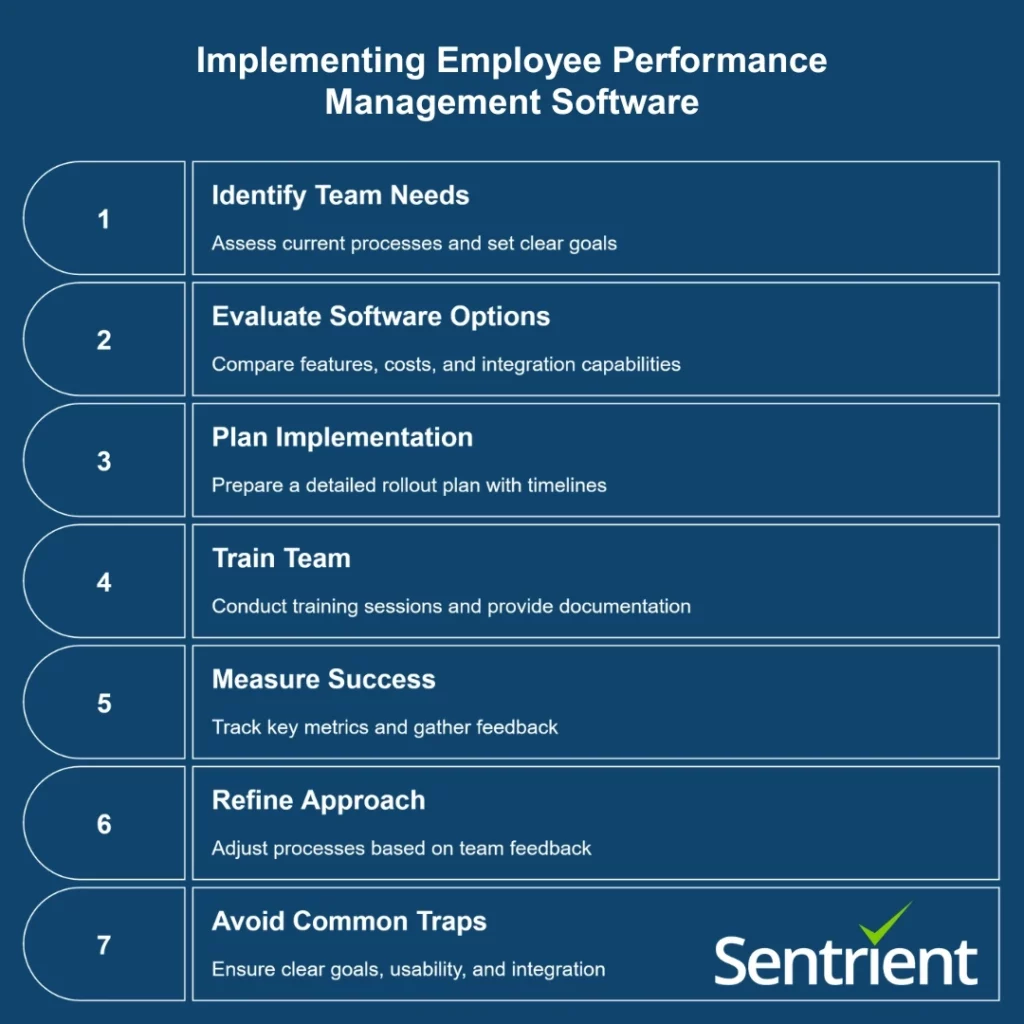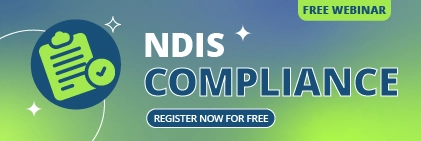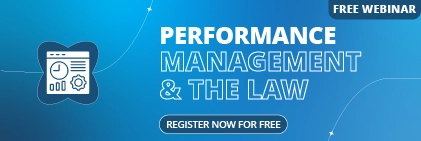Keeping your team performing at their peak is a top priority for any business. This means finding more efficient methods of tracking and evaluating employee performance. That’s where employee performance management software comes in. It’s a game changer, a tool that simplifies and automates many parts of the process, helping foster growth and align your team with the company…
With so many options out there, it can be tough to choose what’s best for your business. We’ll walk you through everything you need to know. From understanding what the tools do, to selection, implementation, and integration into your business. No matter if you’re a small business or a large corporation, we’ll cover everything you need to know. With practical tips and answers to commonly asked questions, we break it all down for you.
What is Employee Performance Management Software?
Performance management software is a digital solution that helps businesses track and evaluate employees in real-time. Unlike traditional annual reviews, employee performance management software offers live data for feedback and improvements. It’s built to transform performance management from a chore into an asset that benefits everyone.
Businesses that discard traditional reviews for a software-focused system often see turnover rates decrease significantly. This shows how performance management solutions help workplaces evolve, creating meaningful and actionable discussions.
Benefits of Employee Performance Management Software
Employee Performance management software is known to increase employee engagement. Regular feedback and recognition of their hard work keep them motivated, improving workplace culture. This, in turn, boosts productivity and thus profitability. Clear goals and tracking with a targeted focus help teams capture what needs to be done in an instant, allowing for improved efficiency and effectiveness. This also leads to the use of analytics to highlight areas that could be improved. Through this, your talent is developed and, perhaps more importantly, your team’s time is saved. Automation cuts down on paperwork and reduces the risk of human error.

These tools don’t just manage performance; they can strengthen your team’s trust and collaboration, something which traditional methods often miss.
1. Identifying Your Team’s Needs
Assessing Current Processes
Before you start looking at the software market, consider what your business really needs. Ask yourself, how are reviews currently handled in your company? What aspects work well, and which aspects don’t? Which gaps in your process are the most vital to fill? Answering these key questions helps narrow down your options and find what really fits your business. If your team dreads a tedious annual review process, you might need something like a continuous performance management feature. Knowing your pain points helps you find the right solution.
Setting Clear Goals
Define goals for your business. You might look to streamline performance reviews, improve employee satisfaction or engagement in the workplace, or measure more significant analytics within the business. For instance, if your aim is to boost productivity by 10% in six months, look for software with strong goal-setting and reporting tools. Clear goals ensure you pick a tool that delivers real value.
Essential Features to Look For
There are several key features that are a must have for all business owners. Goal setting and tracking is essential, to enable forward-thinking in the workplace. Use the S.M.A.R.T goal setting template (Specific, Measurable, Achievable, Relevant, Time-bound) to set clear goals which are suitable for your business. You’ll also want to look for tools with real time progress updates. This ensures alignment between individual goals and company goals.
Tools like Sentrient excel here. Continuous feedback and coaching from senior employees and managers help improve morale and upskill workers, resulting in an uplift in productivity across the board. Instantaneous feedback also helps in this area, limiting missed opportunities or waste buildup. This also includes factors like 360-degree feedback and regular scheduled check-ins. Some tools even analyse feedback sentiment, giving you an insight into team morale.
Performance Reviews and Appraisals
Reviews are still a significant factor in employee performance management software. You’ll want a software solution that has flexible review templates for different levels and different roles, able to be matched to each unique situation. Automated scheduling takes some load off your HR team, and an integrated HRIS system similarly helps. You’ll want to use software with robust analytics and reporting, using data to make decisions. This can include visual dashboards, performance trend reports, and both team and individual insights. Despite the increased frequency of performance reviews, you will find that they do not add to your workload.
2. Integration Capabilities
Your software should integrate smoothly with your other systems. Integration is key when considering employee performance management software. If the software isn’t compatible with your existing infrastructure, consider choosing something else. HRIS compatibility and payroll system links are vital, alongside project management tool integration. The goal of the system is to make your business run smoother, so if you’re needing to spend time adjusting existing systems, it’s likely to lead to inefficiencies. Be sure to research providers and look for reviews from other clients in your industry, and see how their experience fared. Both success stories and cautionary tales are extremely helpful in this journey.
Top solutions like Sentrient’s performance management system often top these lists for their performance management system features.
Comparing Features and Costs
Quick comparison charts are a great tool to weigh the features of different services. Look at core features, pricing, and scalability opportunities. This is crucial for HR, upper management, and business owners to understand what they are going to invest in. This helps you find a tool that fits both your budget and your needs. Keep a focus on user experience to minimise employee resistance. Ease of use will help drive adoption, alongside other helpful features such as 24/7 support and an intuitive experience with training courses and documentation.
Key Points Summary:
- Research: Use review sites to find top-rated tools.
- Compare: Balance features, cost, and scalability.
- Test Usability: Pick software your team will actually use.
3. Implementing the Software
Plan the rollout well in advance. Keep managers and key staff in the loop, and ensure everyone is prepared for a test run. This often includes setting a timeline and clarifying expectations for both your team and the software in the lead-up to the trial. Define key success metrics and you’ll be prepared. This way, your business stays on track without ignoring issues and potentially wasting valuable resources.
4. Training Your Team
Adoption has a high dependency on the level of training you’ve offered to your team. Be sure to provide hands on sessions, alongside video guides and detailed documentation on the new system before it’s rolled out to everyone. Oftentimes, the software provider has training courses available to help prepare your workforce. HR can even add fun incentives to boost participation and engagement during these activities.
5. Measuring Success and ROI
Track key metrics so you know what you’re looking for. It’s impossible to tell if the system has improved your KPIs without establishing a baseline, so be sure to record how your business was performing before implementation. Measuring success can also involve surveys of staff to gather their thoughts, and a thorough dive into productivity and retention data helps keep your business on task.
6. Refining Your Approach
Employee performance management software is built on constant refinements and improvements. Talk to your team and collect their thoughts on the process, and tweak operations as necessary. If one of your teams is struggling to adapt to the new system, you should adjust your coaching facilities as needed.
7. Watch out for these traps
Unclear goals may lead to inefficient use of time. You need a plan before going into the market. Complicated tools are often ignored, and poor usability can be a killer. Tools that don’t connect to your other systems often create more problems than they solve, so integration with existing systems is a must. Don’t skip training; ensure all employees and managers are on board with the program. Small tests prior to a full integration and rollout are a great sampling method to see the impact on your business.
Quick Takeaways:
Here’s what to remember:
- Know Your Needs: Assess current gaps and set goals.
- Focus on Features: Look for goal tracking, feedback, and analytics.
- Test Usability: Choose tools that are easy and supported.
- Plan Well: Roll out with structure and training.
- Measure Results: Use KPIs to track impact.
Conclusion
Picking the best employee performance management software for your business can be challenging. It can transform your business and how your team operates. By assessing your needs, focusing on essential features, and planning a solid rollout, you’ll find a tool that saves time and drives results. Be sure to avoid common traps, and measure and celebrate your successes. Constant refinement and improvement help to get the most out of your investment. Sentrient can offer you a flexible and easy-to-use performance management software. Talk to our team and get started with Sentrient today!
FAQs
1. What’s the difference between employee performance management software and traditional reviews?
Traditional reviews happen once a year and feel static, while performance management software gives you ongoing feedback. It offers tracking and insights for constant improvement, rather than one-off spikes in productivity.
2. How does employee performance management software improve engagement?
It keeps employees in the loop with regular feedback and recognition, tying their work to company success. Employees who feel connected to the success of the business will work harder for it.
3. What features should I prioritise in employee performance management tools?
Go for goal tracking, continuous feedback, reviews, analytics, and integrations. These are all essentials for a solid performance management system.
4. How do I get my team to use the new employee performance management software?
Pick something user-friendly, train everyone well, and get key players involved early to ensure adoption. If your team is resistant to change, training is often all they need to push them to use the system and see the benefits for themselves.
5. Can this software work with my existing HR tools?
Yes, most top performance management software integrates with HRIS, payroll, and other systems for a smooth workflow. If the software doesn’t work with your existing HR tools, it may not be for you.





